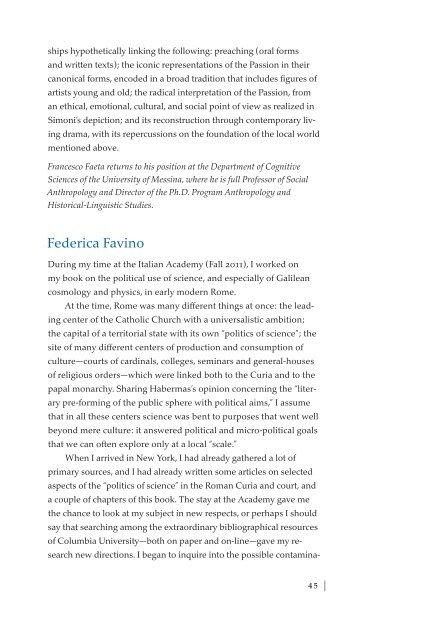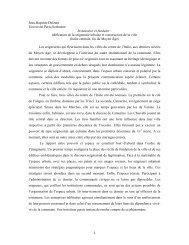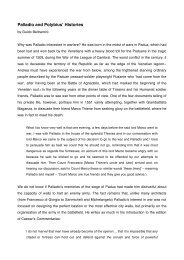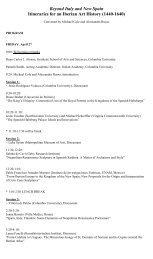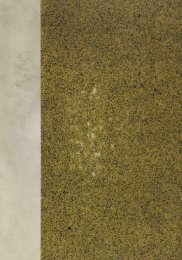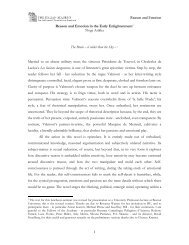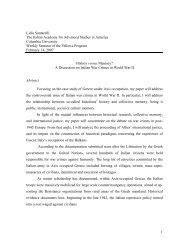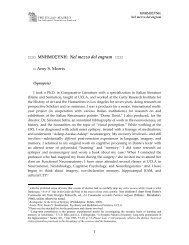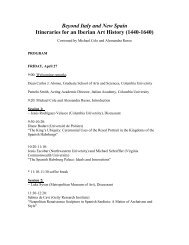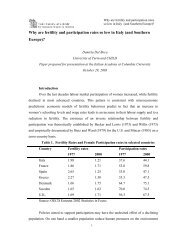2011-2012 - The Italian Academy - Columbia University
2011-2012 - The Italian Academy - Columbia University
2011-2012 - The Italian Academy - Columbia University
You also want an ePaper? Increase the reach of your titles
YUMPU automatically turns print PDFs into web optimized ePapers that Google loves.
ships hypothetically linking the following: preaching (oral forms<br />
and written texts); the iconic representations of the Passion in their<br />
canonical forms, encoded in a broad tradition that includes figures of<br />
artists young and old; the radical interpretation of the Passion, from<br />
an ethical, emotional, cultural, and social point of view as realized in<br />
Simoni’s depiction; and its reconstruction through contemporary living<br />
drama, with its repercussions on the foundation of the local world<br />
mentioned above.<br />
Francesco Faeta returns to his position at the Department of Cognitive<br />
Sciences of the <strong>University</strong> of Messina, where he is full Professor of Social<br />
Anthropology and Director of the Ph.D. Program Anthropology and<br />
Historical-Linguistic Studies.<br />
Federica Favino<br />
During my time at the <strong>Italian</strong> <strong>Academy</strong> (Fall <strong>2011</strong>), I worked on<br />
my book on the political use of science, and especially of Galilean<br />
cosmology and physics, in early modern Rome.<br />
At the time, Rome was many different things at once: the leading<br />
center of the Catholic Church with a universalistic ambition;<br />
the capital of a territorial state with its own “politics of science”; the<br />
site of many different centers of production and consumption of<br />
culture—courts of cardinals, colleges, seminars and general-houses<br />
of religious orders—which were linked both to the Curia and to the<br />
papal monarchy. Sharing Habermas’s opinion concerning the “literary<br />
pre-forming of the public sphere with political aims,” I assume<br />
that in all these centers science was bent to purposes that went well<br />
beyond mere culture: it answered political and micro-political goals<br />
that we can often explore only at a local “scale.”<br />
When I arrived in New York, I had already gathered a lot of<br />
primary sources, and I had already written some articles on selected<br />
aspects of the “politics of science” in the Roman Curia and court, and<br />
a couple of chapters of this book. <strong>The</strong> stay at the <strong>Academy</strong> gave me<br />
the chance to look at my subject in new respects, or perhaps I should<br />
say that searching among the extraordinary bibliographical resources<br />
of <strong>Columbia</strong> <strong>University</strong>—both on paper and on-line—gave my research<br />
new directions. I began to inquire into the possible contamina-<br />
45 |


